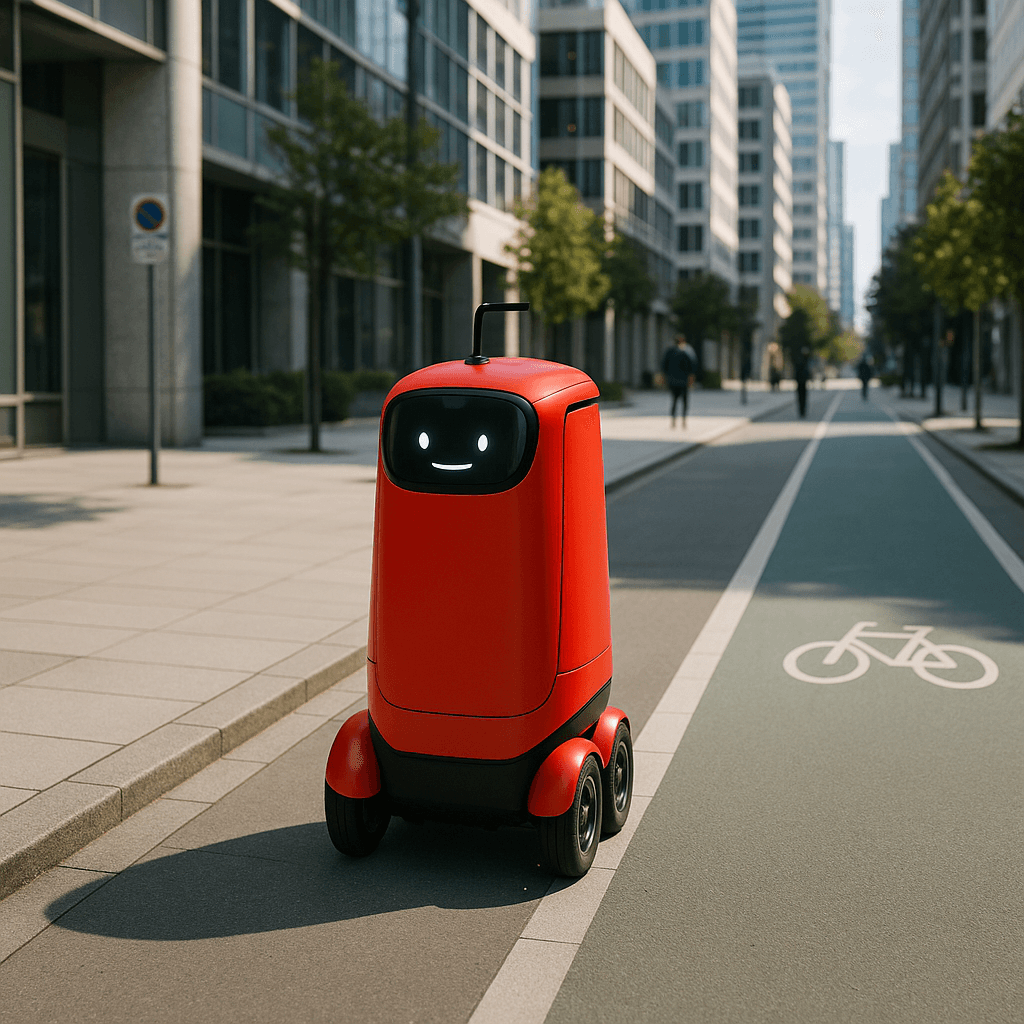DoorDash just unveiled Dot, a five-foot-tall delivery robot with pixelated eyes and a Pac-Man-style mouth that opens to reveal your order. The bright red bot represents the company's push toward a "hybrid" delivery model mixing humans, robots, and drones. After years of setbacks, delivery robotics is heating up again.
DoorDash just threw down the gauntlet in the delivery robot wars. At a San Francisco event this week, the company unveiled Dot - a nearly five-foot-tall autonomous delivery robot that's part cute, part concerning, and entirely ambitious. With its bright red exterior, big pixelated eyes, and Pac-Man-style mouth that opens to reveal your food, Dot represents more than just another gadget. It's a signal that the delivery robotics industry is ready for round two. The timing feels both inevitable and surprising. Delivery robot enthusiasm peaked right before COVID hit, with companies like Amazon and FedEx pouring money into sidewalk bots. Then reality set in. Amazon abandoned its Scout project, FedEx pulled back, and the whole sector went quiet. But now DoorDash is betting big on bringing robots back to the mainstream, armed with data from millions of deliveries and a clear vision for what they call a "hybrid" model. What makes Dot different isn't just its size - though at nearly five feet, it dwarfs most existing delivery robots that barely reach your knees. It's the ambitious scope of where DoorDash plans to deploy it. According to WIRED's coverage of the event, Dot will navigate sidewalks, roads, and bike lanes interchangeably. That's a massive technical challenge that even industry leaders like Waymo have spent billions perfecting for just one environment. The bike lane component has urban transportation experts raising eyebrows. Cities already struggle with overcrowded bike infrastructure, and now a five-foot robot wants to share that space with cyclists, e-bikes, and scooters. DoorDash isn't alone in eyeing bike lanes - companies from Ann Arbor to Estonia have experimented with similar deployments. But the regulatory maze is complex, with some cities technically banning e-bikes from bike lanes while robots lobby for access. The technical hurdles remain formidable. Unlike the controlled environment of roads with clear rules and predictable patterns, sidewalks and bike lanes are chaos incarnate. Tree roots create mini mountain ranges, pedestrians with mobility aids navigate unpredictably, and kids apparently love messing with robots so much that industry leader Starship Technologies has trained its bots to seek out nearby adults for protection. Even partnered with LA-based Coco Robotics earlier this year, whose robots still rely heavily on human teleoperators sitting behind screens, intervening when the bots encounter trouble. It's essentially remote-controlled delivery with extra steps. The labor question looms large too. Research from Carnegie Mellon found that delivery robots often just displaced human work rather than eliminating it - someone still has to clean spilled food, organize cargo slots, and meet customers at the curb. In China, the model works differently, with robots handling simple elevator rides to hotel rooms while humans manage the complex street navigation. wouldn't reveal its investment levels for the Dot project, which suggests either secrecy around a major bet or uncertainty about ROI. The company's strategy of running both its in-house robotics through DoorDash Labs and partnering with external providers like Coco shows they're hedging their bets across multiple approaches. College campuses are emerging as the sweet spot for deployment - wide sidewalks, predictable layouts, and price-insensitive late-night customers create ideal conditions. Starship Technologies has built its business around university deployments, while targets suburbs where infrastructure might be more robot-friendly than dense urban cores.




